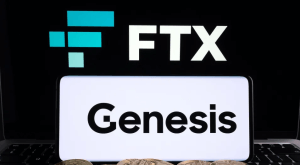Navigating the U.S. Dollar’s Trajectory and Emerging Market Dynamics
In the preceding month, the U.S. dollar index (DXY) has exhibited a predominantly stagnant performance, characterized by fluctuations devoid of a discernible trend. Throughout October, the dollar grappled with a lack of momentum in either direction.

Over this period, the dollar demonstrated strength against the Norwegian krone, Canadian dollar, and Japanese yen, while concurrently displaying weakness against the euro and Swiss franc. Its interaction with emerging market currencies remained variegated, mirroring the diverging trajectories within economic activity and monetary policies observable across currency markets.
Nevertheless, my prognosis anticipates a more distinct upward trajectory for the U.S. dollar in the forthcoming months and quarters. This foresight is founded on the belief that the U.S. economy will undergo a postponed recession, and the Federal Reserve (Fed) will defer its easing cycle until mid-2024. This monetary policy stance is poised to bolster the dollar’s strength in the early stages of the ensuing year.
Furthermore, recent geopolitical developments, inclusive of conflicts in the Middle East and the ongoing Russia-Ukraine dispute in Eastern Europe, have cast an uncertain backdrop. In response to these geopolitical tensions, I envisage the U.S. dollar will experience a surge in demand as investors seek refuge in safe-haven currencies during this period of heightened instability.
With the U.S. economy displaying resilience and the Fed maintaining its hawkish-leaning monetary stance, coupled with the deteriorating economic conditions in Europe, I prognosticate that the euro and British pound will exhibit underperformance through the initial quarter of 2024. Moreover, due to less favourable economic conditions in Canada, my sentiment toward the Canadian dollar has grown increasingly pessimistic for the subsequent quarters.
Looking forward to the first quarter of 2024, I anticipate that the Japanese yen will remain in a defensive posture, albeit with minimal risk of substantial depreciation. This resilience can be attributed to the potential hawkish policy adjustments by the Bank of Japan and indications from Japan’s Ministry of Finance regarding potential intervention in foreign exchange markets.
I also discern the potential for an upswing in the U.S. dollar’s value against emerging market currencies. Central banks in these markets have already initiated interest rate reductions, and the divergence between these actions and the Fed’s hawkish stance is poised to exert downward pressure on emerging market currencies. Latin American and EMEA central banks are pursuing aggressive interest rate cuts, leading me to predict that select currencies in these regions will experience significant underperformance within the emerging markets.
For example, I anticipate that the Chilean peso will underperform due to rapid monetary easing and efforts to rebuild central bank foreign exchange reserves. In addition, I foresee a weakening of currencies in Colombia and Brazil, with the Colombian central bank likely to embark on an easing cycle and Brazilian policymakers expected to continue their interest rate reductions. Within the EMEA region, I maintain a pessimistic outlook for the Hungarian forint, given the more aggressive rate cuts by policymakers compared to the expectations of financial markets.
The prevailing tense geopolitical climate is expected to perpetuate subdued risk sentiment, leading to further depreciation in emerging market currencies, particularly those with higher risk profiles, such as those in Chile, Colombia, and Hungary.
Taking a longer-term perspective, my viewpoint remains that the U.S. dollar will generally depreciate against both G10 and emerging market currencies. This outlook is based on my belief that the U.S. economy will eventually enter a recession, prompting the Fed to implement more aggressive interest rate reductions than what is currently priced in the markets.
As interest rate differentials shift against the U.S. dollar, I anticipate that foreign currencies will gain strength in the latter half of the following year and into 2025. Although I expect a temporary decline in some foreign currencies, the Japanese yen is likely to experience a more substantial recovery over time. The prevailing influence of higher U.S. Treasury yields, the hawkish Fed, and the accommodating stance of the Bank of Japan has weighed on the Japanese yen. However, if the Fed does reduce policy rates as I anticipate, and even if the Bank of Japan continues its gradual monetary policy tightening, yield differentials are expected to favor the Japanese yen in the long term.
As these dynamics unfold, I project the USD/JPY exchange rate to approach JPY146.00 by the conclusion of the following year. Furthermore, the more accommodative monetary policy by the Fed is poised to alleviate some pressure on select emerging market currencies in the latter part of the subsequent year. Currencies that are less exposed to heightened local political risks, especially those stemming from elections, and central banks with prudent approaches to monetary easing, are expected to outperform. In this context, specific currencies in emerging Asia can benefit from their political stability and their adoption of a “higher for longer” policy stance.
This content may have been written by a third party. ACY makes no representation or warranty and assumes no liability as to the accuracy or completeness of the information provided, nor any loss arising from any investment based on a recommendation, forecast or other information supplied by any third-party. This content is information only, and does not constitute financial, investment or other advice on which you can rely.
The subject matter and the content of this article are solely the views of the author. FinanceFeeds does not bear any legal responsibility for the content of this article and they do not reflect the viewpoint of FinanceFeeds or its editorial staff.









